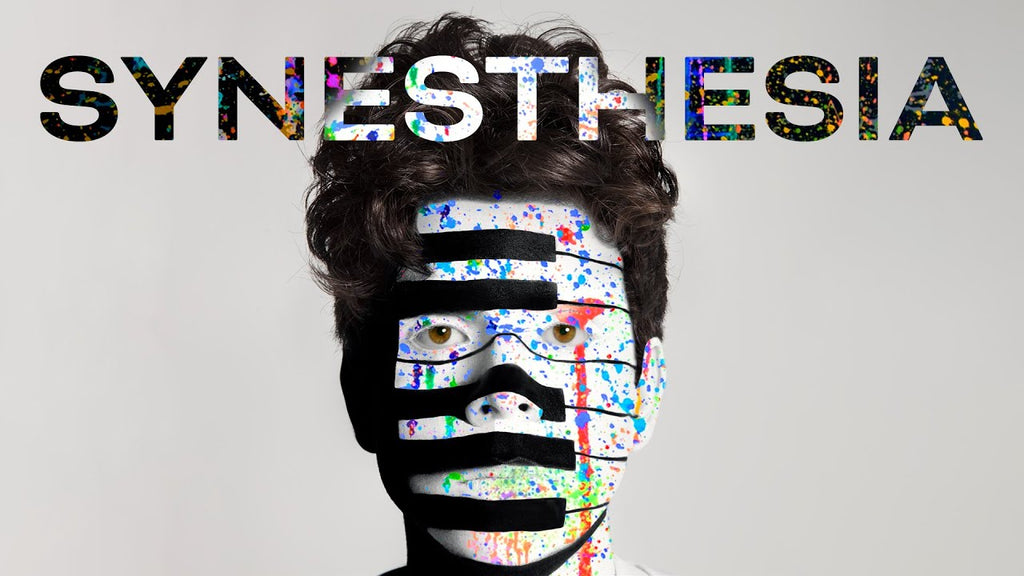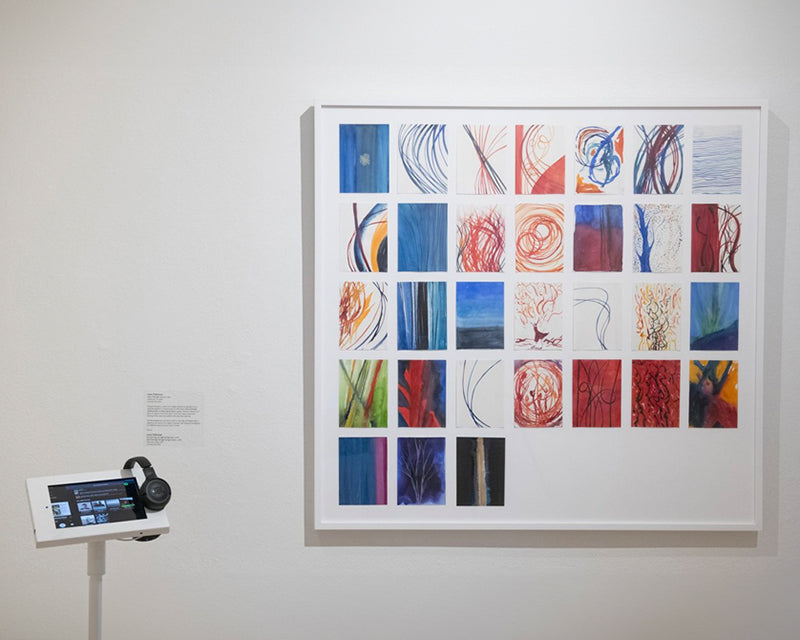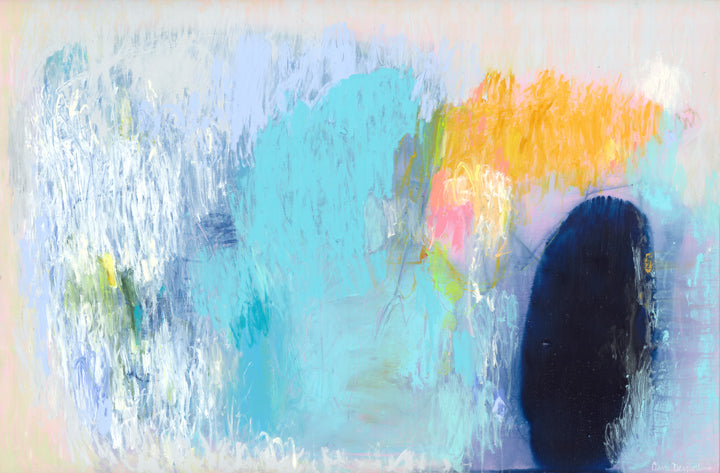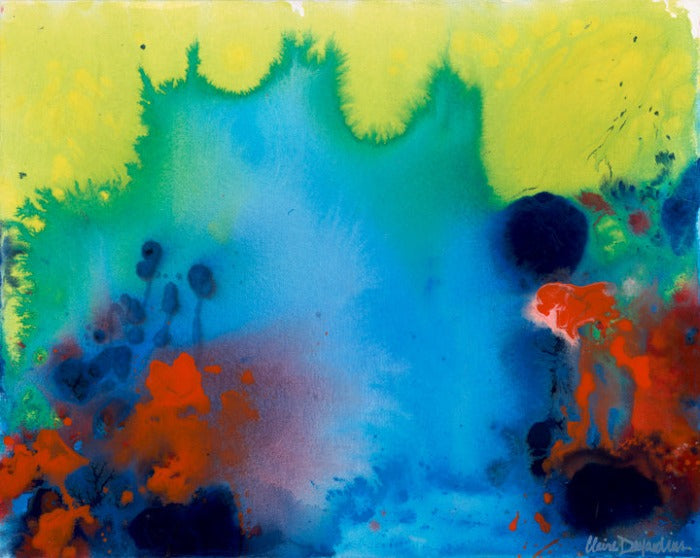I visited the tranquil grounds of The Hermitage Artist Retreat on Manasota Key in Englewood, Florida, and found myself immersed in a world where creativity knows no bounds. This artist retreat, nestled by a white sandy beach on Manasota Key (Florida), is a sanctuary for creative individuals, where they may delve deep into their artistic passions, pushing the boundaries of innovation and imagination.
Recently, I had the privilege of attending an artist talk, where one particular multi-disciplinary artist, Anne Patterson, captivated my attention with her unique perspective on the relationship between art and music. She spoke of seeing music as vibrant colors and dynamic shapes, a phenomenon known as synesthesia. Intrigued by her revelation, I delved deeper into understanding this fascinating condition and its profound implications for the world of abstract art.
Synesthesia is a neurological phenomenon where stimulation of one sensory pathway leads to automatic, involuntary experiences in a second sensory pathway. In simpler terms, it's like experiencing the world in a multisensory symphony, where sounds may evoke colors, shapes, or even tastes.
The discovery of synesthesia in individuals can vary, from self-realization to observation by others. Some may recognize their synesthetic experiences from a young age, while others may only discover it later in life through conversations or formal diagnosis. Regardless of the method of discovery, synesthesia offers a window into a rich tapestry of perception beyond the ordinary.
For artists, particularly abstract painters like myself, synesthesia can be a powerful muse, infusing our work with a kaleidoscope of sensory impressions. The merging of sound and color opens endless possibilities for artistic expression, allowing us to translate the intangible language of music into tangible visual compositions.

Another notable figure is David Hockney, whose vibrant paintings are infused with a sense of synesthetic harmony, blurring the lines between sight and sound. His masterful use of color and form reflects a deep connection to the sensory landscapes of his inner world.
And let's not forget Rudy Mancuso, the talented artist and musician, who openly shares his experiences with synesthesia. Known for his versatile talents in both music and visual arts, Mancuso captures the attention of millions with his captivating performances and innovative creations.
For Mancuso, synesthesia serves as a source of inspiration and creativity, enriching his artistic endeavors with a unique perspective on the interplay of sound and color. Through his music, he paints vivid sonic landscapes that resonate with listeners on a profound level, inviting them into the rich tapestry of his synesthetic experiences.

In his visual art, Mancuso explores the dynamic relationship between form and color, channeling the synesthetic sensations that arise from his music into striking visual compositions. His work transcends traditional boundaries, blurring the lines between sight and sound, inviting viewers to immerse themselves in a multisensory journey of exploration and discovery.
As prominent figures in both the art and music worlds, these individuals stand as shining examples of the transformative power of synesthesia. Through their creative endeavors, they inspire and captivate audiences, inviting them to experience the world through the vibrant lens of synesthetic perception.
In the realm of synesthesia, the possibilities are endless, reminding us of the profound beauty that lies at the intersection of sensory experience and creative expression. So let us embrace this multisensory symphony, allowing it to guide us on a journey of exploration and discovery, where art and music converge in a harmonious dance of color and sound.
AFTERWORD
As a lingering after-thought, I wanted to know exactly HOW someone could be diagnosed with Synesthesia, so I took to Chat GPT, to ask my question. Here is the response AI came up with:
-
Self-Reporting: The individual experiencing synesthesia often notices unusual sensory experiences, such as seeing colors when hearing music or tasting flavors when touching objects. They may realize that their perceptions differ from those of others and may seek out information about synesthesia.
-
Clinical Evaluation: A healthcare professional will conduct a thorough evaluation, which may include:
-
Medical History: The professional will inquire about the individual's medical history, including any neurological conditions or sensory experiences.
-
Symptom Assessment: They will ask detailed questions about the nature of the synesthetic experiences, including which senses are involved and the consistency of these experiences.
-
Physical Examination: A physical examination may be performed to rule out other medical conditions that could be causing similar symptoms.
-
Psychological Evaluation: Sometimes, psychological assessments are conducted to assess cognitive function and mental health.
-
-
Testing: While there are no specific medical tests to diagnose synesthesia, some researchers and clinicians have developed questionnaires or tests to assess synesthetic experiences. These tests may involve presenting stimuli to evoke synesthetic responses and recording the individual's perceptions.
-
Confirmation: Based on the information gathered from self-reports, clinical evaluation, and any tests conducted, the healthcare professional will determine whether the individual's experiences align with the characteristics of synesthesia.






1 comment
You are very inspiring
Just started painting at 68 and can’t stop